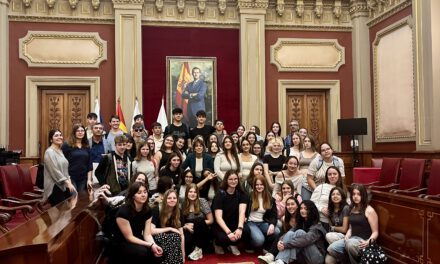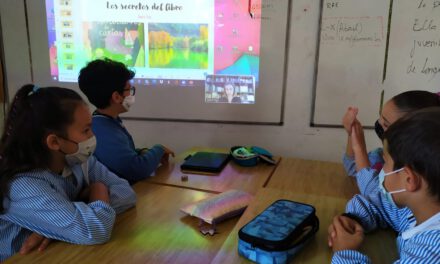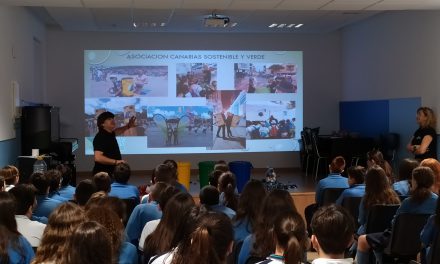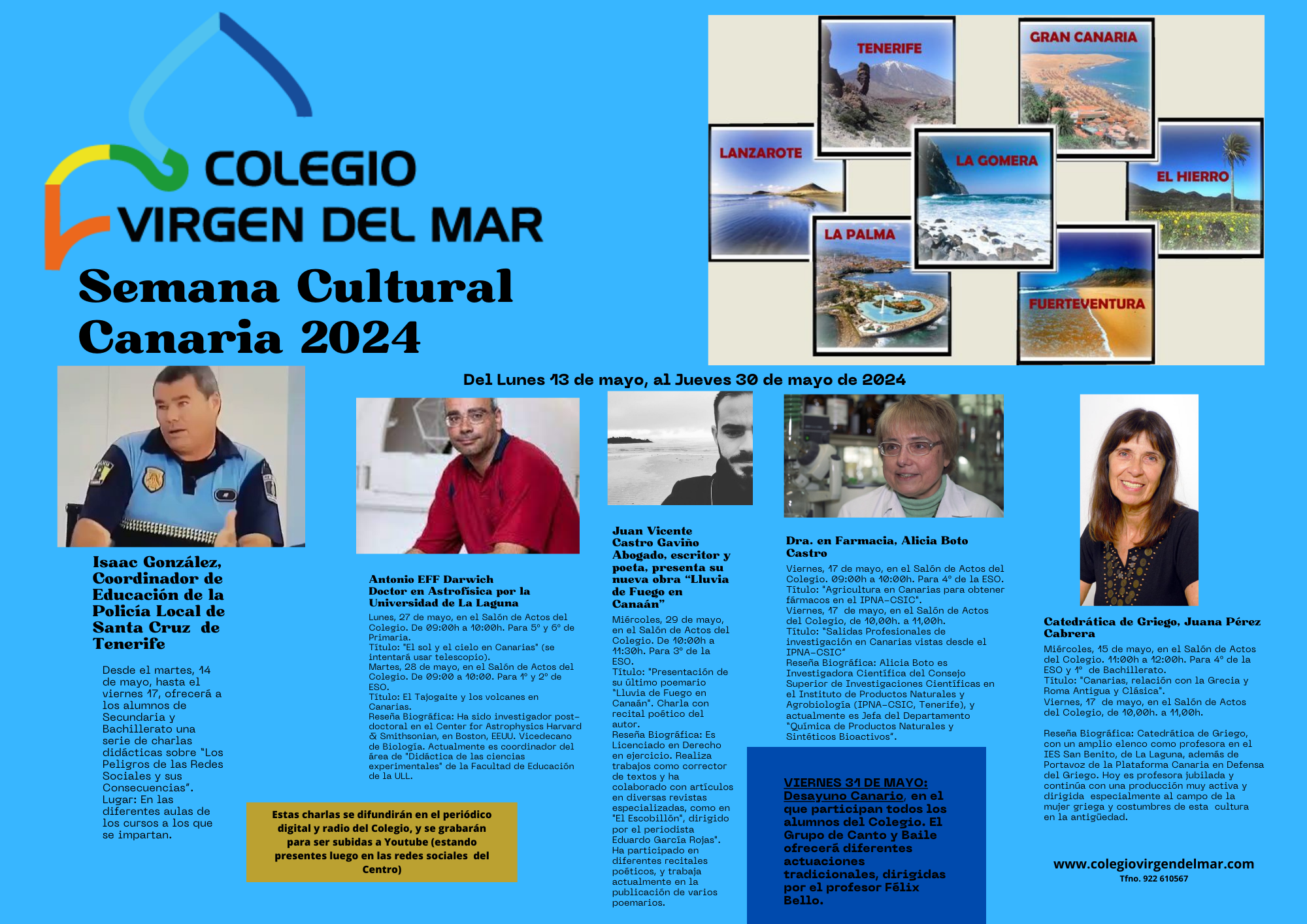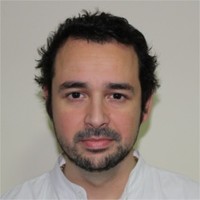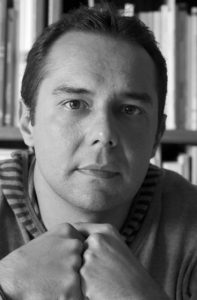«Belfast», the Northern Irish conflict ended in 1998
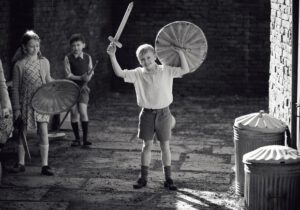
Álvaro, Eider, Naiara, Nerea and Paula 1st Bachillerato A
The Northern Irish conflict ended in 1998, which feels far away in time and normally we wouldn’t care about an old conflict, even less if it isn’t our country . But this changed when this year, Kenneth Branagh released Belfast, a movie he wrote and directed, telling his own life experience. A moving story about a little kid and his family, who live in Belfast in the sixties and experience the beginning of the conflict between Catholics and Protestants in Northern Ireland. That’s why we’re going to present our project explaining everything that happened.
In order to understand everything properly, we should start from the beginning in the late sixties. The conflict can be considered to have started way back in the fifteen hundreds, but we’re going to focus on the later period, more specifically, 1969, however, we will also refer to earlier periods. The conflict began in the late 1960s and is usually deemed to have ended with the Good Friday Agreement of 1998. The conflict was primarily political and nationalistic, fuelled by historical events. It also had an ethnic or sectarian dimension but despite use of the terms ‘Protestant’ and ‘Catholic’ to refer to the two sides, it was not a religious conflict. “The Troubles” were all about who Ireland belonged to or who should run Northern Ireland. The population was divided in two different sides, the Nationalists also called Republicans, wanted a free and united Ireland, they also were mainly Catholic. There were also the Loyalists, also known as unionists, who wanted to remain in the UK and they were mostly protestant. Now, we have to go back to 1916 when the Ulster division made sacrifices to the republican nationalist community. In that same year, the Easter Rising took place. The Easter Rising was a rebellion in Dublin, Ireland during Easter in 1916. It was carried out by members of the Irish Republican Brotherhood and members of the Irish Citizens Army. It was done to protest against British rule in Ireland. It was the first uprising in Ireland since the 1798 rebellion. At first, the Irish had planned to have a larger number of men to attack the city.
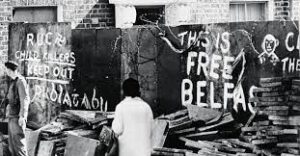
In 1960, life was hard, both for Catholics and or Protestants. The Catholic community in Ireland didn’t have access to the same services and systems as the protestant community, which caused the catholic’s resentment, which led to clashes and violence, this then resulted in the appearance of British troops that came in to keep peace. This generated a situation where Northern Ireland was run directly from London and that set the scene for the troubles. Northern Ireland was used to violence and segregation because that was kind of the way it had always been in the area. Communities didn’t get mixed, they were divided by physical barriers, for instance children went to different schools, they had very little stuff that brought the communities together. This was one of the main factors that led to Bloody Sunday, which we’ll explain later. This also caused collusion between members of the British security and Loyalist groups, there were informers working in both camps, some of them were discovered and then killed.
As we mentioned before, the Northern Irish population was mainly protestant, but what kind of conflict did the catholics and protestants have? And mainly why? In July 1690, a Protestant force of 36,000 men, led by William of Orange, defeated a smaller Catholic force at the Battle of the Boyne, near the city of Drogheda. Twelve months later, Protestant forces again triumphed over Jacobites (supporters of the Catholic King James II) at Aughrim in County Galway. Catholic and Protestants belong to two different branches of Christianity. Although in 1971, around 80% of people in the Republic of Ireland identified as Catholic, in Northern Ireland, almost 32% of the population identified as Catholic.
Protestant religion is much younger than Catholicism. It emerged in the 16th century as a breakaway movement from the Catholic Church. This Reformation questioned the doctrines of the church and protested against some of its rituals, and by 1971, approximately 53% of Northern Irelanders belonged to the Protestant religion.
Among Protestants and Catholics there are two groups: Nationalists and Republicans. Nationalist are people who demanded political independence and sovereignty for their country, in this case, Ireland, while Republicans are the ones who supported a government without a monarchy or hereditary rules, like the United Kingdom. Although this is what we study in history in the context of Northern Ireland, these two concepts are assumed to mean the same thing, people who believe in a unified Ireland, free from any kind of British control.
And, as it’s opposite, are Unionists and Loyalists which have some important differences between them, as unionists support the existence of Northern Ireland, their ongoing union with Great Britain and their right to self-government. By contrast loyalists are defenders of British rule, history, tradition and culture, they support British monarchy and cherish British motifs.

After having discussed that, we wanted to talk about the main originator of many conflicts in the time to come, The IRA. The IRA was a terrorist group that was the epicentre group of The Troubles in Ireland whose intentions were to get the independence of ireland and reunite it. The IRA had existed for almost a century but in three different phases the first one being formed by the ones who participated in the failed Easter rising of 1916 which was the first attempt of Ireland against the UK and after that the republicans of the Irish army. They promoted the war of the independence of Ireland concluding with its independance.
The second phase started in 1969 and at this point the IRA leaders were mostly political leaders instead of military commanders and the terrorist group wasn’t as much as it was before, after many years the number of people in the group was reduced greatly that very moment marked the beginning of the fall of the IRA.
The third and last phase happened after World War 2 in which the IRA split into two groups, the official IRA (OIRA) and the provisional one; both of them with a minimum number of people .This started a decay of these groups due to the fact that civilians rose up against them and because there were not many people and weapons; as time went by it ended up in the elimination of them and the end of the IRA.
Now it’s time to explain one of the most significant parts of the Northern Irish conflict, Bloody Sunday. It is rightfully identified with violence in the UK, as Bloody Sunday refers to an infamous incident that occurred in Northern Ireland during 1972 that resulted in 14 deaths. Bloody Sunday was a massacre that occurred on January 30, 1972, when British soldiers shot 26 disarmed civilians during a protest in Derry, Northern Ireland. Fourteen people died. Many of the victims were shot while fleeing from soldiers, and others were shot while trying to help the wounded. It was the highest number of people killed or dead in a shootout during the conflict and is considered the worst mass shooting in Northern Ireland’s history. Other protesters were injured by shrapnel, rubber bullets or batons, two were run over by British Army vehicles and some were beaten. All the victims were Catholics. The march had been organised by the Northern Ireland Civil Rights Association, to protest against internment or confinement without trial. The soldiers belonged to the 1st Battalion of the Parachute Regiment.
The demonstration was promoted among others by Ivan Cooper to protest the imprisonment without trial of predominantly Catholic Irish people in Northern Ireland. In the city of Derry at the time, the nationalists had established an area where British law enforcement could not operate in what became known as Free Derry, encompassing the Bogside and Creggan neighbourhoods.

The British authorities had prohibited the march from crossing the borders of that area. To avoid incidents, the organisers requested and obtained the commitment that the two active factions at that time suspend their activities that day, in order to achieve a peaceful and massive march. It was then that, breaking away from the main group, a group of about fifty protesters continued down William St., harassing the soldiers occupying them, throwing stones and bottles. A few minutes later the British troops launched themselves against the demonstrators. As the protesters fled, the British opened fire.
Finally in 1998 all this came to an end. The agreement reached was that Northern Ireland would be part of the United Kingdom, and would remain so until a majority of the people both of Northern Ireland and of the Republic of Ireland wished otherwise. Should that happen, then the British and Irish governments are under «a binding obligation» to implement that choice.
The agreement was approved by voters across the island of Ireland in two referendums held on 22nd May 1998. In Northern Ireland, voters were asked in the 1998 Northern Ireland Good Friday Agreement referendum whether they supported the multi-party agreement.
To conclude, we all agree that this conflict caused not only deaths and losses, but also instability in the northern Irish society. For over 25 years, not only were they killed and persecuted, but they couldn’t feel safe in the place they had considered their homes for their whole life. And not to mention how stupid it is to fight over different religions. It’s obvious that there’s no way to actually meet everyone’s wants according to a country’s politics. As Jamie Dornan’s character said in the movie “that girl can be a practising hindu or a southern baptist or a vegetarian antichrist, but if she’s kind, and she’s fair and you two respect each other she and her people are welcome in our house any day of the week”. What really matters is the kind of person you are, not your beliefs, if you’re not harming anybody of course.

